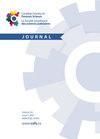伊朗Cameriere和Willems方法估计伊朗儿童牙齿年龄的准确性
IF 0.5
Q4 MEDICINE, LEGAL
Canadian Society of Forensic Science Journal
Pub Date : 2022-06-24
DOI:10.1080/00085030.2022.2084927
引用次数: 0
摘要
摘要基于牙片的年龄估计方法是最准确、最流行的年龄估计法。这些方法的准确性可能因种族而异。因此,本研究旨在评估和更新伊朗儿童群体中的Cameriere牙科年龄估计方法,并将其与Willems牙科年龄评估方法进行比较。对110名6至12岁的患者(55名女孩和55名男孩)进行了一项回顾性横断面研究,使用牙科记录和数字牙科全景照片。为了评估这两种方法的准确性,计算并比较了估计的牙齿年龄和按时间顺序排列的年龄之间的差异。本研究结果显示,Willems方法高估了年龄,而更新的伊朗Camerier方法低估了年龄,但高估/低估并不显著,Willemss组的男孩除外。Willems牙科年龄估计(WDA)和Iranian Cameriere牙科年龄评估(ICDA)方法均适用于选定的伊朗儿童群体,尽管WDA估计不太准确,尤其是对男孩。本文章由计算机程序翻译,如有差异,请以英文原文为准。
Accuracy of Iranian Cameriere and Willems methods for estimating dental age in a population of Iranian children
Abstract Age estimation methods based on dental radiographs are of the most accurate and popular methods for age estimation. The accuracy of these methods might vary between different ethnic groups. Therefore, the present study was performed in order to evaluate and update the Cameriere dental age estimation method in a population of Iranian children and compare it with the Willems dental age estimation method. A retrospective cross-sectional study was performed, using dental records and digital dental panoramic radiographs of 110 six- to 12-year-old patients (55 girls and 55 boys). In order to assess the accuracy of both methods, the difference between the estimated dental age and the Chronological age was calculated and compared. Results of the present study showed Willems method overestimated the age and the updated Iranian Cameriere method underestimated the age, but the over/underestimations were not significant, except for the boys in Willems group. Both Willems dental age estimation (WDA) and Iranian Cameriere dental age estimation (ICDA) methods were applicable in the selected population of Iranian children, although the WDA estimations were less accurate, especially for boys.
求助全文
通过发布文献求助,成功后即可免费获取论文全文。
去求助

 求助内容:
求助内容: 应助结果提醒方式:
应助结果提醒方式:


